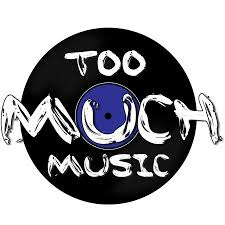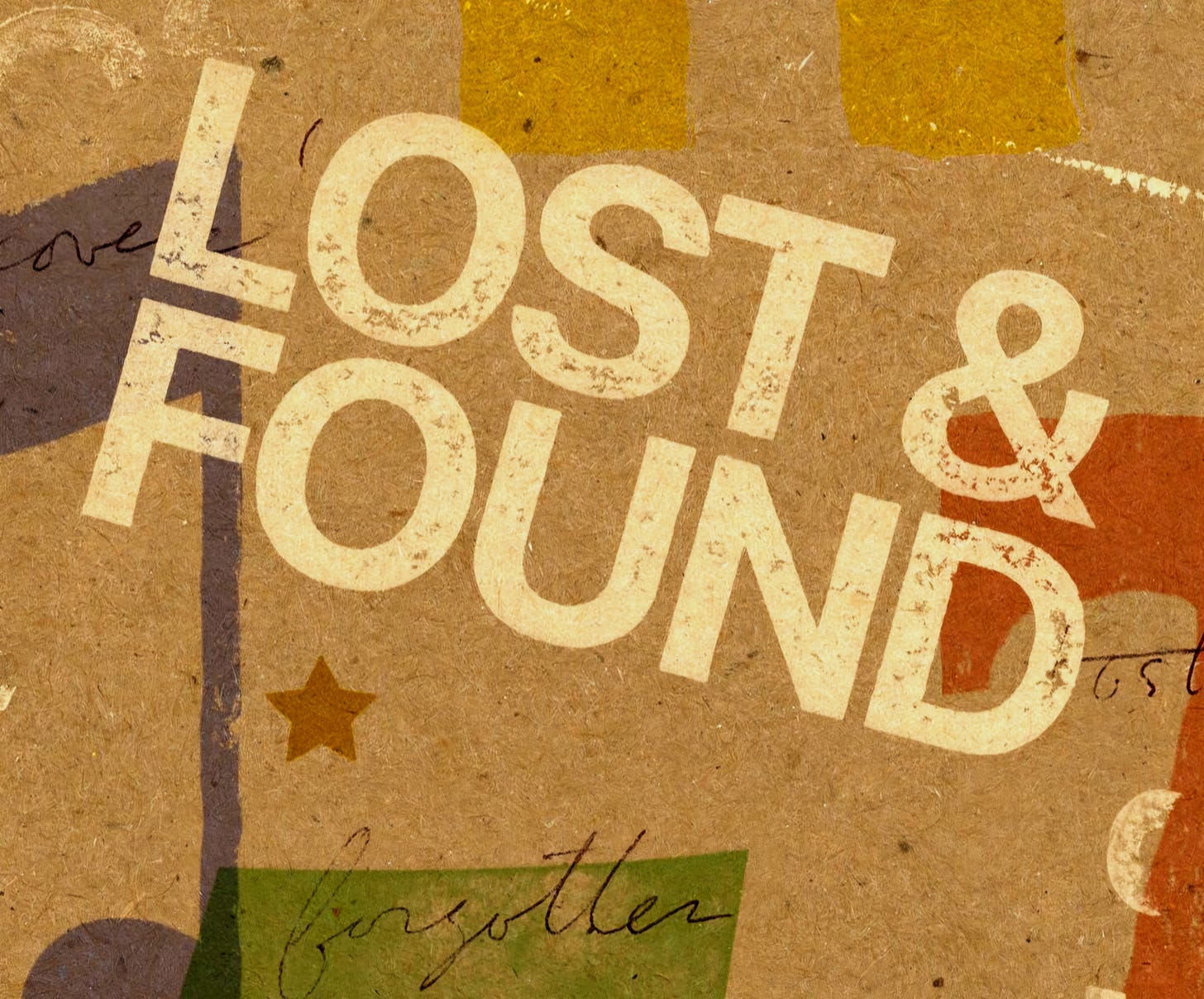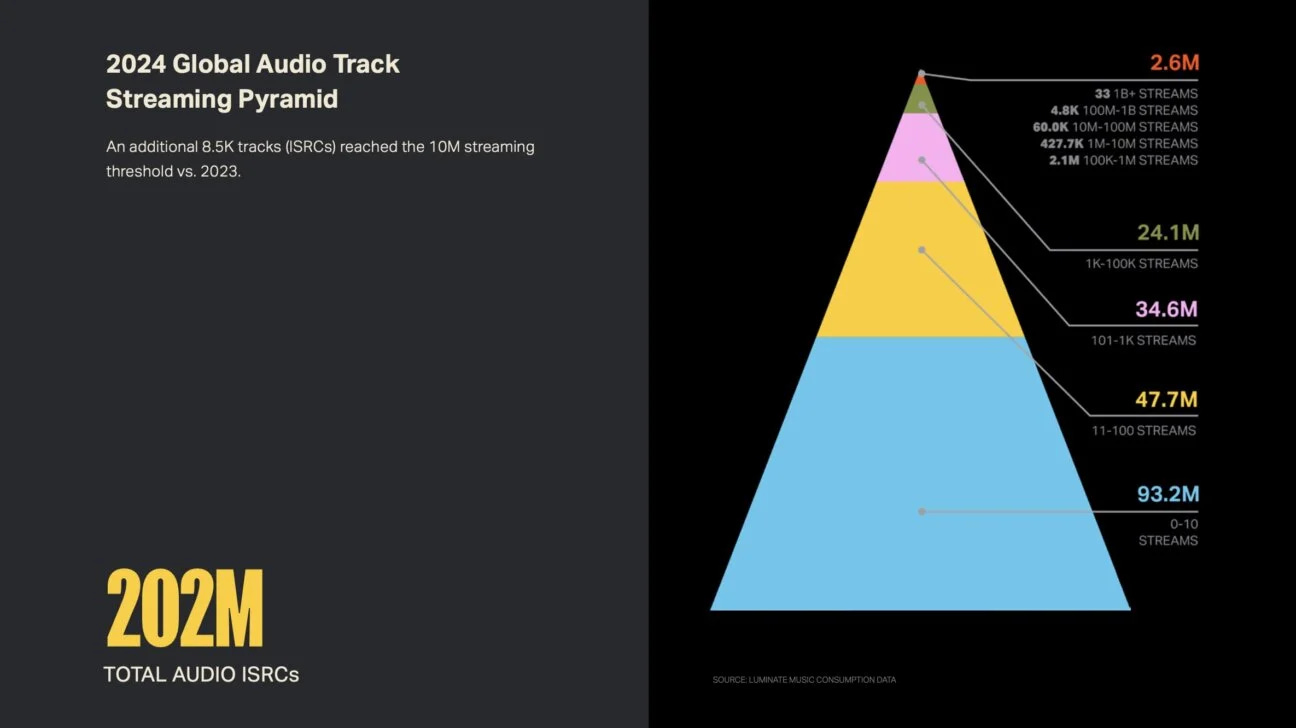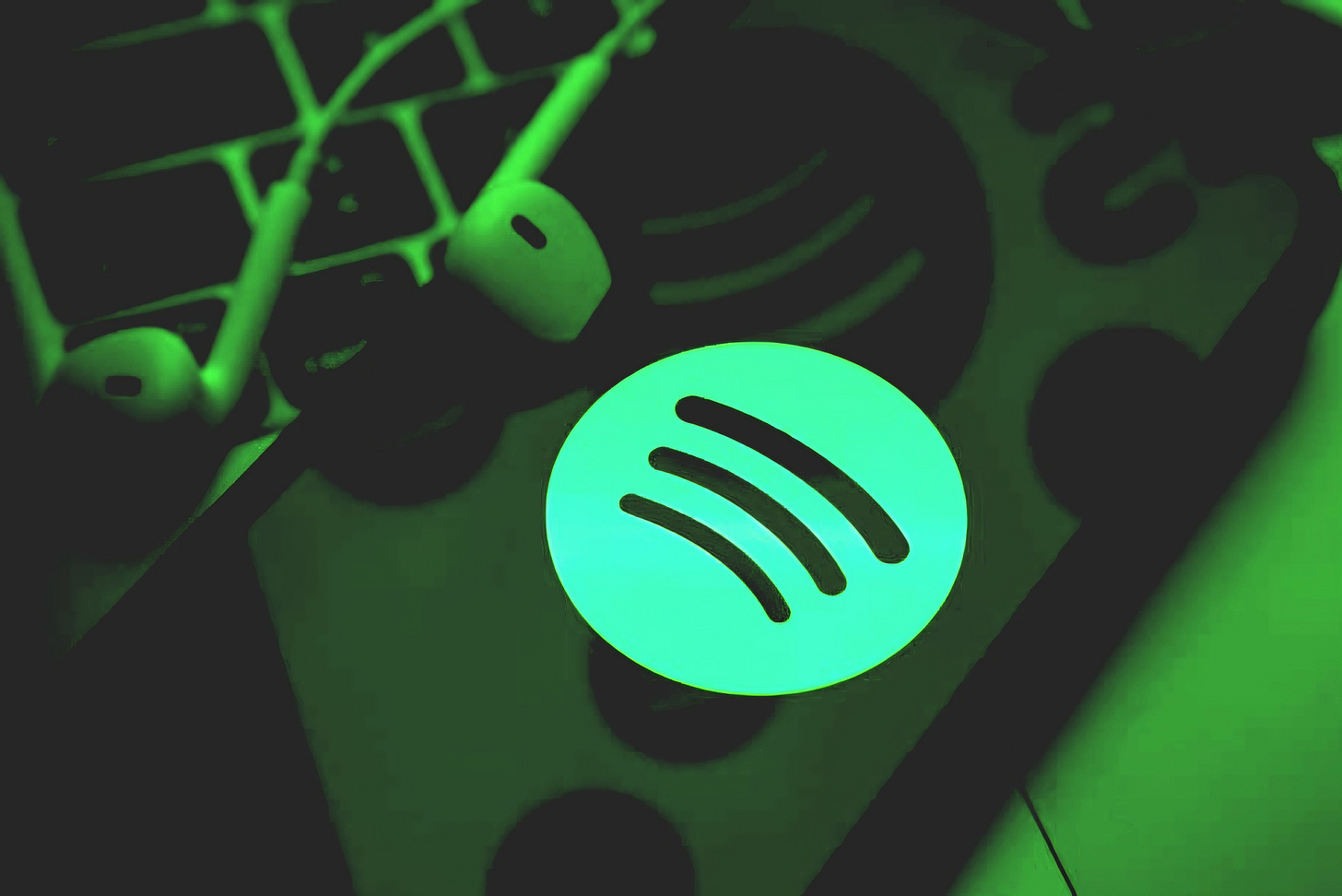Too Much Music?? | The Over-saturation of Streaming Platforms 🥞🎶
What the Music Industry Faces in 2025...
With over 200 million tracks on streaming platforms and nearly half barely played, the music industry grapples with the challenges of over-saturation and fairness in revenue distribution.
Introduction: A Flood of Music, But Who’s Listening?
The music streaming landscape has reached a staggering milestone. According to Luminate's 2024 Year-End Music Report, over 202 million tracks are now available on streaming platforms like Spotify, Apple Music, and YouTube. Yet, this growth comes with a sobering reality:
Nearly 93.2 million tracks (almost half) were played no more than 10 times in 2024. Even more striking, around 50 million tracks reportedly received ZERO plays last year.
These numbers clearly reveal that the over-saturation of streaming platforms is leaving most music unheard.
As the music industry enters 2025, it faces critical questions. How can platforms manage this overwhelming influx of content? Should tracks with minimal plays be excluded from royalty pools? And what does this mean for artists struggling to find an audience in an increasingly crowded market?
The Numbers Behind the Crisis
The statistics from Luminate and Chartmetric paint a stark picture:
202 million tracks were available on streaming services at the end of 2024, up 9.8% from 2023.
On average, 99,000 new tracks were uploaded daily in 2024.
Approximately 87% of all tracks (175.5 million) were played fewer than 1,000 times across multiple platforms.
Around 95% of Spotify artists had fewer than 1,000 monthly listeners, with 86% attracting fewer than 10 monthly listeners.
These figures highlight the growing "long tail" of content, i.e. millions of tracks that exist but are rarely or never consumed by listeners.
The Role of Technology and Accessibility
This explosion of content can be attributed to the (supposedly) democratization of music production and distribution. AI-powered tools for music creation and user-friendly distribution platforms have lowered the barriers to entry for aspiring “artists”. While this has empowered countless creators, it has also led to an over-supply of music that far exceeds listener demand.
Streaming services like Spotify and Apple Music operate on algorithms designed to surface popular or personalised content. However, with millions of new tracks uploaded annually, many songs fail to gain any visibility or traction. This creates a paradox:
While more artists than ever have access to global distribution, their chances of reaching any audience are diminishing.
The Debate Over Royalty Distribution
One of the most contentious issues in this over-saturated environment is how royalties are distributed. Streaming services typically pool all revenue and divide it based on total streams. This model inherently favours popular tracks while marginalizing those with minimal plays.
In response to this imbalance, Spotify implemented a policy in 2023 excluding tracks with fewer than 1,000 plays per year from its royalty pool. While some argue this approach ensures fairer distribution among active contributors, others see it as penalising smaller or emerging artists who struggle to meet these thresholds.
Critics also point out that even collectively, low-performing tracks represent a significant share of total streams. Excluding them from royalties could disproportionately benefit major labels and established artists at the expense of independent creators.
The Challenges of Over-saturation
The sheer volume of content on streaming platforms presents several challenges:
Discovery Issues: With millions of tracks competing for attention, even high-quality music can get lost in the noise.
Algorithmic Bias: Recommendation algorithms often prioritise established artists or viral hits, making it harder for new or niche creators to break through.
Listener Fatigue: The abundance of choice can overwhelm users, leading them to stick with familiar playlists or curated content.
Economic Inequality: The current royalty model exacerbates income disparities between top-tier artists and the vast majority who earn little to nothing from streaming.
Potential Solutions for the Industry
Addressing these challenges will require innovative approaches from both streaming platforms and industry stakeholders:
Enhanced Discovery Tools: Platforms could invest in better algorithms or human curation to surface hidden gems and promote diversity in listening habits.
Alternative Royalty Models: Adopting user-centric payment systems—where a listener's subscription fee is distributed only among the artists they stream—could provide fairer compensation for smaller artists.
Content Moderation: Implementing stricter quality control measures or limiting uploads could reduce over-saturation without stifling creativity.
Education and Support: Providing resources for independent artists to improve their marketing strategies and audience engagement could help them stand out in a crowded market.
At Vinyl Culture, we are working rigorously to a build a unique Music Streaming service that prioritises Artists' autonomy, Fair payment structures and Quality content with strict measures against AI-generated content & Algorithmic manipulation. More on this soon…
What Lies Ahead?
The over-saturation of streaming platforms is not just a technological issue; it's a cultural and economic one that reflects broader shifts in how music is created and consumed. As we move further into 2025, the industry must balance fostering creativity with ensuring sustainability for artists.
For listeners, this abundance offers unparalleled access to diverse music but also underscores the importance of intentional discovery by seeking out lesser-known artists rather than relying solely on algorithmic recommendations.
For creators, these challenges highlight the need for adaptability. In an era where simply uploading a track is no guarantee of success, building a loyal fanbase through offline & social media engagement, live performances, and unique branding will be more crucial than ever.
Conclusion: A Call for Balance
The music industry's current trajectory is unsustainable without significant changes. Over-saturation threatens not only the viability of streaming platforms but also the livelihoods of countless (current & future) artists striving to be heard. By re-thinking royalty models, improving discovery tools, and supporting independent creators, the industry can create a more equitable ecosystem where quality and not just quantity, prevails.
As listeners, we hold power too. By exploring beyond mainstream playlists and supporting emerging talent, we can help shape a more inclusive musical landscape where every artist has a chance to find their audience… 🤝🏼
What do you think about the state of streaming today? Share your thoughts in the comments below!
Join us at Vinyl Culture as we continue exploring ways to preserve and evolve authentic Music Culture in an age dominated by algorithms and corporate interests. Together, we can make a difference.🫱🏼🫲🏽
Read More from Vinyl Culture📚:
In the coming weeks, we'll delve deeper into topics like strategies for meaningful music discovery in the digital & AI age. Together, we can ensure that music remains a vibrant, diverse, and integral part of our lives. 😃











Yeah, I deleted my Spotify playlists. I do believe in integrity. I still am a user but only listen to artist albums now. I used to stream on Amazon Music, i tunes, and Pandora. I am forever altered. Sighs.
Very good observations and truths.
Thank you for working on new paths for music!